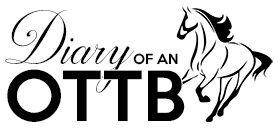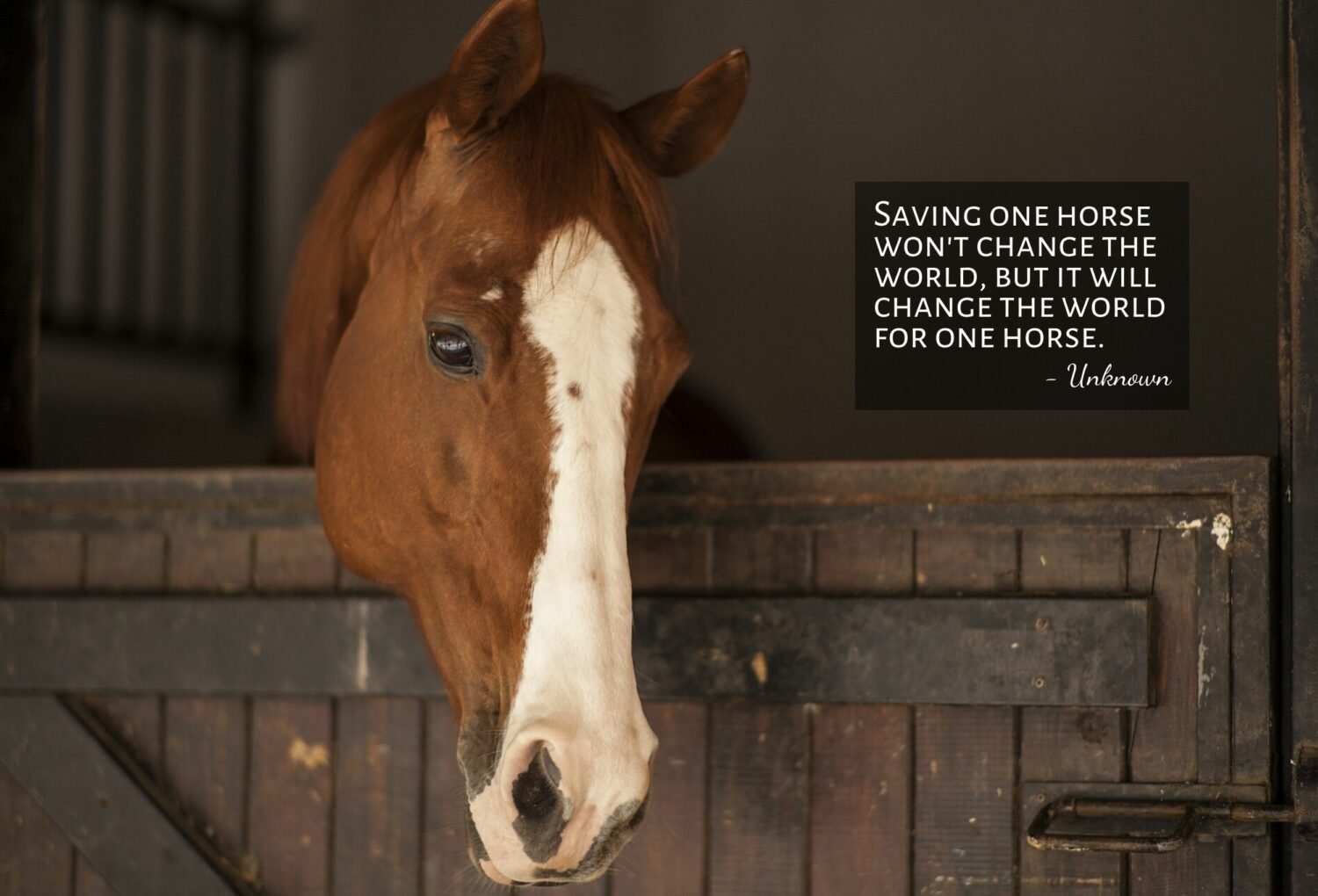As the owner of a horse who spent his previous career on the racetrack, I can’t help but wonder what changes will come to horse racing in 2020. It’s been a polarizing topic of conversation over the past year with more than 40 horses being euthanized at Santa Anita in Southern California alone and just over this past weekend three more were euthanized in three days at the same track.
Simply by virtue of owning a retired racehorse, I seem to be the go-to expert on the subject of racing for many of my non-horse people friends.
It’s left me wondering how newcomers and the proverbial keyboard warriors can get involved with the racing industry, promote change, and how they can help racehorses who go on to second, third, and fourth careers. To celebrate the start of the new decade I put together a list of 10 ways you can help horse racing and retired racehorses this year.
1. Donate Your Time (or Money) To Thoroughbred Aftercare & Re-homing Organizations
Despite a 10-year low in breeding, there were just shy of 20,000 registered Thoroughbreds born in the United States last year. Of those 20,000, roughly a third of them will never make it to the track and of more than half of those who do train and race, most will never win a single race. What that leaves are thousands and thousands of racehorses who will eventually need to find non-racing homes. One of the best organizations to support the aftercare of retired racehorses is the Thoroughbred Aftercare Alliance. The Thoroughbred Aftercare Alliance is a 501(c)(3) nonprofit that accredits, inspects, and awards grants to approved organizations that retrain, retire, and help re-home retired racehorses. TAA works with more than 70 accredited organizations and has helped retrain, rehome or retire more than 10,000 Thoroughbreds. If you’re interested in helping horse racing this year, a good place to start is by helping horses coming off the track, whether through volunteering your time or by making a donation. You can check to see if there are any TAA accredited organizations near you here, but there are also many other rehoming organizations like CANTER USA and New Vocations that have some state branches across the country, most of which will happily accept volunteers or monetary donations.
2. Support the Coalition for Horse Racing Integrity, the Horseracing Integrity Act (HR 1754) & Reach Out To Your Local Politicians For Support
There are a few organizations and potential pieces of legislation that could have a great impact on horse racing in 2020. The Coalition for Horse Racing Integrity is one of the organizations fighting for change within the sport. On the legislative side of the coin, the Horseracing Integrity Act (HR 1754) was re-introduced in the United States Senate this past June, but since that time there has been little progress. If you want to see change in the racing industry, this bill might help affect that by creating a private, conflict-interest-free anti-doping authority that would oversee a nationwide anti-doping and medication control program. You can read the bill in its entirety here. While I’m not always the biggest fan of government intervention, it seems almost necessary that something of this nature happens for real change to be seen in the sport. Contact your local representatives by phone or email and let them know why you believe they should support (or not support) this piece of legislation.
3. Do Not Try to Adopt (or Even Share) the 52 Thoroughbreds You Might See On Social Media
If you’ve been in the horse world for a few years you might recall a viral post on social media that encouraged readers to help find homes for 52 Thoroughbreds who suddenly needed homes after their owner died unexpectedly. While this was a very real story and one heck of a desperate situation in 2011, all 52 Thoroughbreds found homes through the power of Facebook in just 4 days… almost 9 years ago. But for some unholy reason, this viral post continues to go viral on an almost annual basis. Want to help Thoroughbreds this year without mucking stalls or donating part of your pay check? Do your due diligence on social media before you share posts that claim to be breaking news. HorseNation also had a pretty hilarious article last year about 3 ways to deal with the news… including a drinking game.
4. Ask About Volunteering at Your Local Racetrack
Depending on where you live in the United States you might be located near a racetrack of some kind, whether that be geared towards Standardbred harness racing or Thoroughbred racing. If you’re interested in being more than just a spectator, call or email your local track and see if they need volunteers for any upcoming events. Some may have more formal volunteer applications while others may be a little more relaxed. The only way to find out is to see what’s nearest to you and ask!
5. Bring Your Tack, Blankets, or Horse Care Supplies to an Aftercare or Rescue Facility
Horse owners are all a little similar in the sense that if you’ve owned a horse for more than a few years, there’s a good chance you’ve acquired some tack or blankets you might not be using as much anymore. When you’re ready to find that tack a new home, consider donating them to a Thoroughbred aftercare or rescue facility. Just make sure that everything has been cleaned and disinfected as much as possible and in all likelihood, some one (and some horse!) will be very grateful.
6. Don’t Forget About Standardbreds!
While Thoroughbred racing draws the biggest crowds and purses in the industry, there are thousands of standardbreds pulling sulkies on tracks throughout the country as well. These horses are equally deserving and in need of homes and second careers. Unlike Thoroughbreds, standardbreds are known for their pacing, gated movement while pulling a cart, making them great for drivers and trail riders. Located close to my own home is the Standardbred Retirement Foundation – an organization that focuses solely on rehoming off the track standardbreds. If you’re interested in learning more about adopting a standardbred or volunteering to help, click here.
7. Participate in or Attend the Thoroughbred Makeover
In case you’re new to the world of retired racehorses, the Retired Racehorse Project’s Annual Thoroughbred Makeover at the Kentucky Horse Park has become one of the most influential competitions among OTTB owners. Unlike most other horse shows, the Thoroughbred Makeover is open only to retired racehorses who’ve come off the track within the past year, making it one of the only shows in existence to focus exclusively on retired Thoroughbreds. For the competitive types, this is a tremendous opportunity to compete with an OTTB on a national stage and for those less competitive, it’s an excellent chance to meet other OTTB owners and enthusiasts and explore one of the most prestigious horse complexes in the country.
8. Be An OTTB Advocate for Other Horse Owners
Retired racehorses tend to not have the greatest reputation among other horse owners. From being too difficult to retrain to not being suited for specific disciplines, there are a mess of myths surrounding the OTTB. And while OTTB owners are greatly outnumbered by quarter horses, it’s easy to support the breed regardless of whether or not you own one. One of the biggest supporters on social media is the Western Thoroughbred, a Facebook page that showcases retired racehorses competing in western disciplines all over the world. Just by following or liking organizations and athletes like this, you’re doing a small part to help show that Thoroughbreds are capable of adapting to almost any discipline.
9. Visit Some Breeding Operations
During my visit to Kentucky last fall by far one of the biggest highlights of the trip was visiting some of the most prestigious Thoroughbred breeding farms in the country. These barns are responsible for producing Grade I winners of every variety, including the two living Triple Crown winners Justify and American Pharaoh, both of whom call Ashford Stud at Coolmore home. No matter which breeding operation you choose to visit you’ll most likely have the opportunity to meet some former Kentucky Derby winners and prolific sires. I even had the chance to meet my own OTTB’s grandfather, Fusaichi Pegasus, when I visited Coolmore. We also had a chance to meet California Chrome at Taylor Made Farm before he moved to Japan. While some tours may be more in depth than others, VisitHorseCountry.com is a an excellent resource for planning your next trip to the Bluegrass State.
10. Watch Live Race Coverage
Supporting horse racing can be as simple as changing the channel. Tuning in to live race coverage does a few things but one of the biggest is giving an incentive to networks and advertisers to continue showing races in prime time. Beyond that, it’s a great opportunity to get together and have a mint julep with your friends and have a conversation about the future of the sport.

